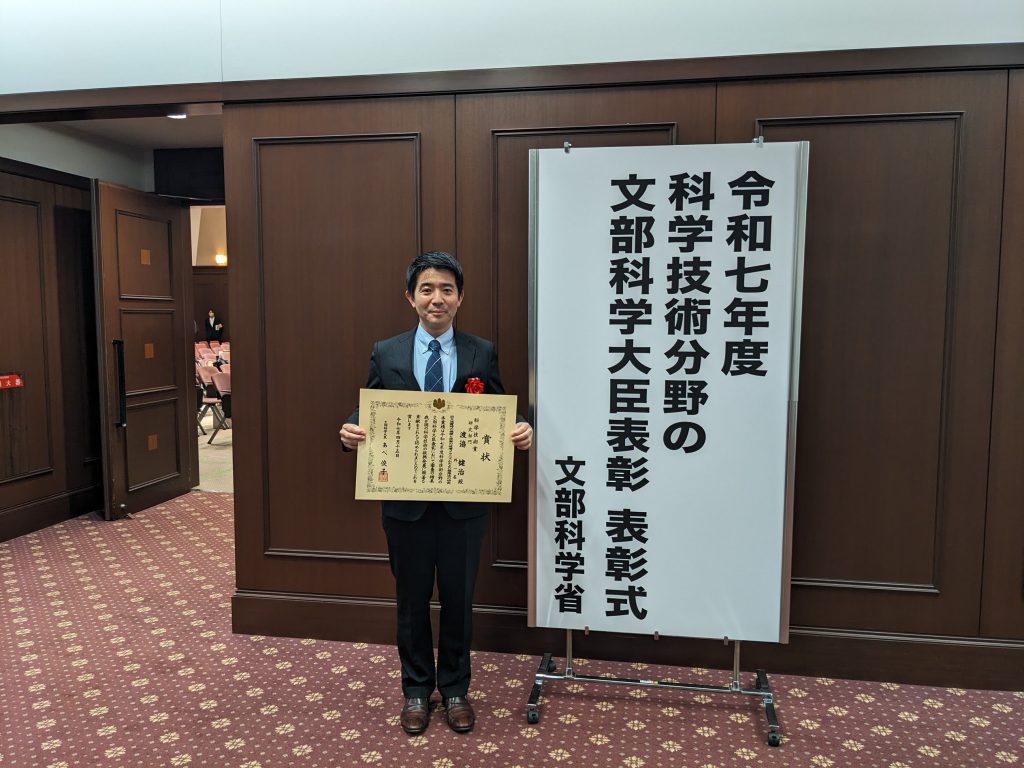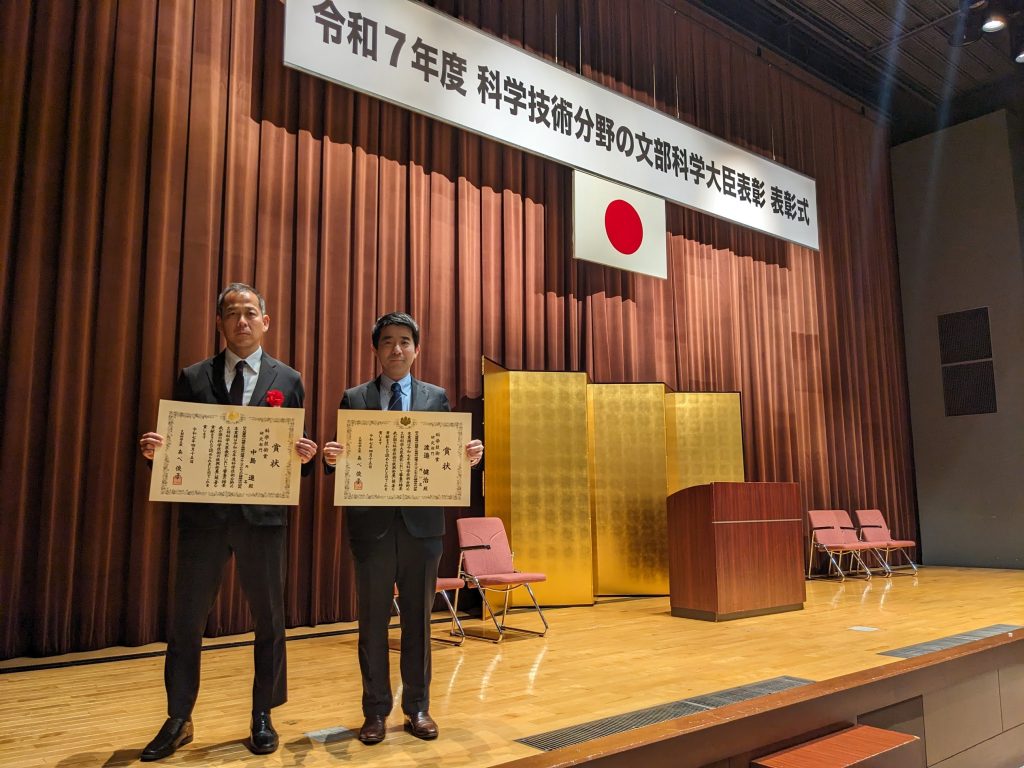渡邉健治教授が文部科学大臣表彰(科学技術賞 研究部門)を受賞しました。件名は「巨大地震時の擁壁と地盤の破壊メカニズムおよび補強法の研究」であり、(公財)鉄道総合技術研究所の中島進氏(研究室長、当専攻H17修士、H20博士卒)との共同受賞でした。
Professor Kenji Watanabe has received “Awards for Science and Technology (Research Category)” from the Minister of Education, Culture, Sports, Science and Technology. The award was given for the research titled ‘Failure Mechanism and Reinforcement Method of Retaining Walls and Ground during Large Earthquakes’, conducted jointly with Dr. Susumu Nakajima (Laboratory Head, Railway Technical Research Institute).


【業績概要】(文科省資料への掲載)
世界有数の地震国の日本では、巨大地震時に擁壁の倒壊による人的損失、孤立集落、インフラ不通等が発生しており、擁壁の耐震化が喫緊の課題であった。 本研究では、独自の計測技術を駆使した実験により擁壁と地盤の変形・破壊メカニズムを解明し、擁壁の「地震時残留変位算定法」を構築した。また、地震時に擁壁に作用する土圧をより合理的に評価可能な「土の粘着力を考慮した地震時土圧算定法」を提案した。さらに、補強後の既設擁壁での地盤と擁壁破壊の相互影響メカニズムを解明し、既設擁壁の効率的補強を可能とする「既設擁壁補強技術」を開発した。本研究により、力の釣合いに基づく古典的耐震設計から脱却し、残留変位を指標とする擁壁の合理的な耐震設計が可能となり、技術基準への反映により世界初の擁壁の性能照査型設計を確立した。また、「地震時土圧算定法」と現場条件・要求性能水準に応じた「既設擁壁補強法」を擁壁の耐震診断・補強に活用し、鉄道耐震化の劇的な合理化・低コスト化を実現した。
本成果は、鉄道分野だけではなく、道路・宅地擁壁、学校等公共施設の擁壁に対する、補強事業の合理化とそれによる社会的安全性の確保に寄与することが期待される。
[Summary of Research Achievements]
Japan, one of the most seismically active countries in the world, has experienced the collapse of retaining walls during major earthquakes, leading to human casualties, isolated communities, and disrupted infrastructure. As a result, improving the seismic resistance of retaining walls has become an urgent issue.
In this study, the deformation and failure mechanisms of retaining walls and the surrounding ground were clarified through precise experiments. A method for calculating the seismic residual displacement of retaining walls was developed.
Additionally, a new “seismic earth pressure calculation method considering the cohesive strength of soil” was proposed, enabling a more rational evaluation of seismic earth pressure acting on retaining walls during earthquakes.
Furthermore, the dynamic interaction between reinforced retaining walls and the backfill soil was elucidated, leading to the development of a more rational reinforcement method.
This research enables the seismic design of retaining walls based on residual displacement as a performance index, which is totally different from the conventional design approach based on force equilibrium. The results have been applied to new design standards which is based on performance-based design.
These findings are applicable not only to railway structures, but also to roads, residential areas, schools, and other public facilities, and are expected to contribute to public safety.